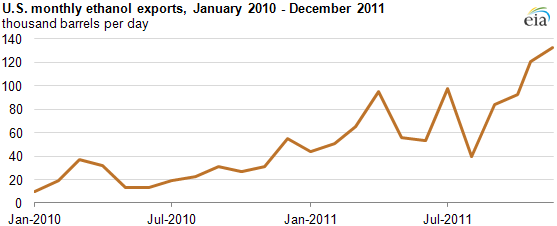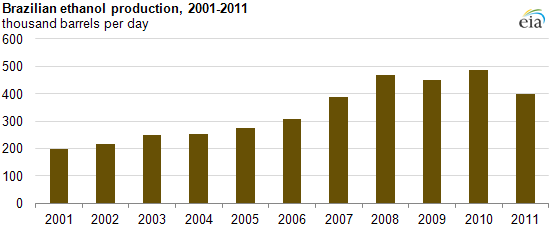
Record U.S. ethanol exports in 2011 help offset Brazil's production decline

Note: Data series begins in 2010.
U.S. ethanol exports in 2011 reached a record high partly due to Brazil's need to import more ethanol after a poor harvest of sugarcane—the feedstock for most of Brazil's ethanol—sharply decreased that country's ethanol production. U.S. ethanol exports were 133,000 barrels per day at the end of 2011 compared with about 10,000 barrels per day in early 2010.
The United States boosted its exports of ethanol, made mostly from corn, to an average of nearly 78,000 barrels per day during 2011, up 200% from 2010, according to preliminary full-year trade data from the EIA's Petroleum Supply Monthly February 2012 report. Ethanol export volumes averaged less than 10% of U.S. ethanol production, which was 910,000 barrels per day last year.
Most of those shipments went to Brazil, normally a major U.S. competitor in biofuels trade that makes its ethanol from sugar. However, Brazil faced high world sugar prices and a lower sugarcane harvest that reduced the country's ethanol production by an estimated 20% last year (see chart below), according to EIA's updated country analysis brief on Brazil's energy sector.

Note: Data for 2011 are estimated.
Brazil's government lowered the ethanol blend requirements of the volume in gasoline from 25% to 20% to help moderate demand for ethanol. Brazil's sugarcane industry association estimates the country's ethanol production will decline further in 2012.